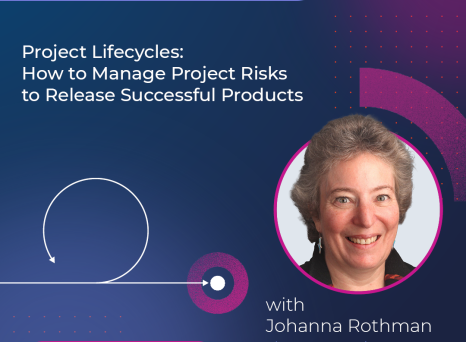Data is worth its weight in gold. When you collect and harness good quality data, you can make better, more confident business decisions.
And, when you can’t guarantee this quality? Well, let’s just say you’ll lose out on more than just a pristine Excel spreadsheet.
Of course, bad data isn’t just an issue for departments dealing with complex analytics pipelines and financial budgets.
Consider the Project Management Office (PMO); supporting decision-making is one of its primary roles. But, to do this, it needs to provide good quality data stakeholders can rely on. This requires process compliance. This requires control.
What is PPM Process Compliance?
Broadly speaking, PPM process compliance is the key to data quality. Its control relies on defined, shared, and maintained processes.
Your project teams can try and maintain this compliance alone. But, be warned; not everyone’s a born process guru. To achieve compliance, you need control. This is where the PMO can offer support.
PMOs enforce the compliance of defined PPM processes. They also analyze data to ensure its consistency and accuracy. This is especially important when information is consolidated - the quality of each piece is vital to the quality of the whole dataset. The higher the quality, the stronger your top-level and project-level decisions will be.
We can split this process compliance into four broad responsibilities: data control, process management, monitoring, and follow-up. We offer some examples of the tasks found within these responsibilities below:
Data Sets and Processes Your PMO Must Oversee
Regular controlling
This involves overseeing the data input of project managers, typically collected via:
- Timesheets
- Project reports
- Key performance indicators
- Budget
- Resources
- Project progress and status
Stage & Gate process management:
A PMO may manage key project process management steps, such as:
- Organize the delivery and gate validation review
- Update demand and project status
- Facilitate validation process
PPM process compliance monitoring
Throughout a project’s lifecycle, a PMO may track:
- Timesheet submission
- Project reporting submissions
- Project kick-off management
- “Lessons learned” implementation
Routing processes
Lastly, the PMO may handle the routing process and follow-up of ideas, demands, and change requests.
How do Different PMOs Approach Process Compliance?
The scope of compliance activities your PMO manages - as well as the control it exerts - will differ depending on its structure.
In the following section, we’ll summarize the level of compliance responsibility Supportive, Controlling, and Directive PMOs may demonstrate. We’ll also briefly outline their advantages and disadvantages.
Supportive PMOs
This office has global ownership of PMO data registries, such as your PPM tools, collaborative spaces, and HR files. They offer a light level of control when it comes to data input, but typically do not manage data quality.
Ultimately, the weight of the PPM process compliance, monitoring, and activity routing responsibilities lie with your project or portfolio managers.
Pros and cons:
The Supportive PMO is the cheapest way of controlling information. It allows project teams to manage their own local PPM data, all while providing a structured and global approach to process standardization and data input.
On the one hand, this enhances flexibility and autonomy. This can be beneficial for improving time-to-market and team morale. For example, software producers that need to bring products to market quickly will benefit from this approach,
However, you’re reliant on individuals to uphold data quality. This can result in inconsistent compliance, as not every project team member will have the same level of PM maturity. Nor can you guarantee they’ll follow your global standards. Ultimately, this reduces trust.
Controlling PMOs
A Controlling PMO also takes responsibility for managing PMO data registries, but applies additional control on critical data. These datasets may include registered activities, project resources, and financial data.
In addition to this, they monitor the overall PPM process compliance and provide support for routing and follow-up processes.
Pros and cons:
The Controlling PMO sits comfortably in the middle; they offer a more balanced approach to process compliance. This ensures a higher level of data quality for your strategic activities, all while allowing project teams to handle their operational processes autonomously.
That said, this control is not enough by itself. By controlling your data, you can better understand why some datasets fail quality standards. It’s then your responsibility to trigger corrective actions, such as additional training and organization reviews.
You may want to adopt this approach if you have a mixture of departments that require stricter data control (such as financial departments) and others that don’t (such as R&D).
Directive PMOs
Finally, a PMO with a Directive approach controls PPM process compliance and data across strategic and operational levels. They also manage the routing of project activities and PPM process management.
Pros and cons:
Of all three models, the Directive PMO has the highest level of control. This means they can implement tighter data quality processes and global coordination. And, due to their larger scope of activities, they can also ease some of the compliance burdens from project and portfolio owners.
Of course, this comes at a price. The larger scope results in bigger costs and resources. And your project teams may experience some grating bottlenecks due to this PMO’s heavy-handed approach. This level of control must be justified by specific contexts, such as safety regulations or laws. Otherwise, the cost of a Directive PMO will trigger defiance and avoidance.
You may adopt this approach if you execute large-scale, complex projects that have significant investment and must follow rigorous regulations. For example, if you’re building an aircraft or a motorway.
Process Compliance and Your PMO
Inconsistency in PM approaches and a lack of governance are among some of the top PMO challenges businesses face today.
All PMOs must execute some form of process compliance. Governance is a key part of this.
For organizations handling highly critical strategic and operational data, a Directive PMO may suffice. But, if your project teams follow a very standardized process with little room for compliance breaches, a Supportive PMO will do.
The trick is to weigh up flexibility and agility versus quality and control. What matters more for your organization - Agile teams or infallible data? Once you define what level of process compliance you likely need, you can build your PMO around it.


